
7taps
#1 Microlearning Platform
Sign up east
14-day trial. Zero cost. Full access. No credit card required.
May 6, 2025
•
Kate Udalova
Learning that sticks looks less like a module—and more like a campaign:
That’s why I built this blueprint—to show you what a behavior-first, microlearning-powered initiative can look like in practice.
It’s a performance initiative disguised as a learning game.
It lives beyond your LMS—and it works because it’s social, narrative-driven, and embedded in the flow of work.
⚠️ Most common mistake:
Treating microlearning like mini content. Instead, treat it like an activation system for behavior change.
Let’s assume your goal is to shift how new managers show up in their first 30 days.
Here are the key behavior gaps we’re closing:
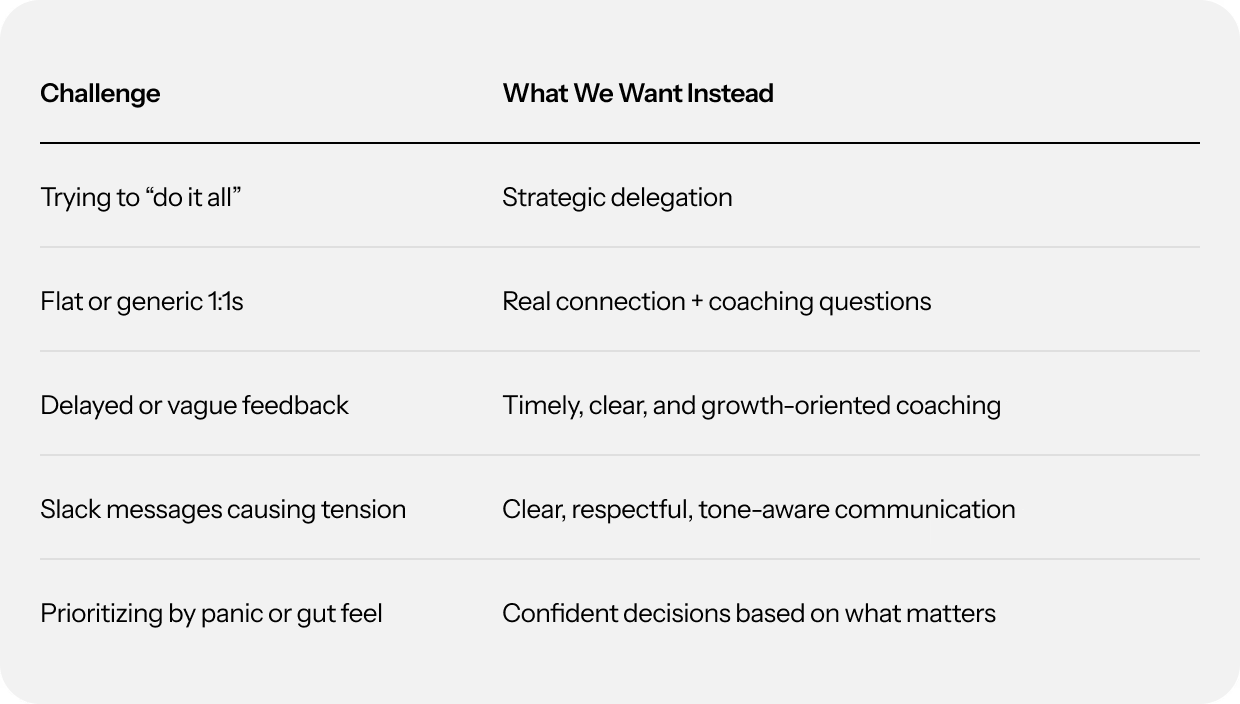
🧠 Pro tip: You’re not teaching topics. You’re activating decisions.
Most onboarding stops at content delivery. This one maps 6 key stages in a journey that reinforces, nudges, and deepens over time:
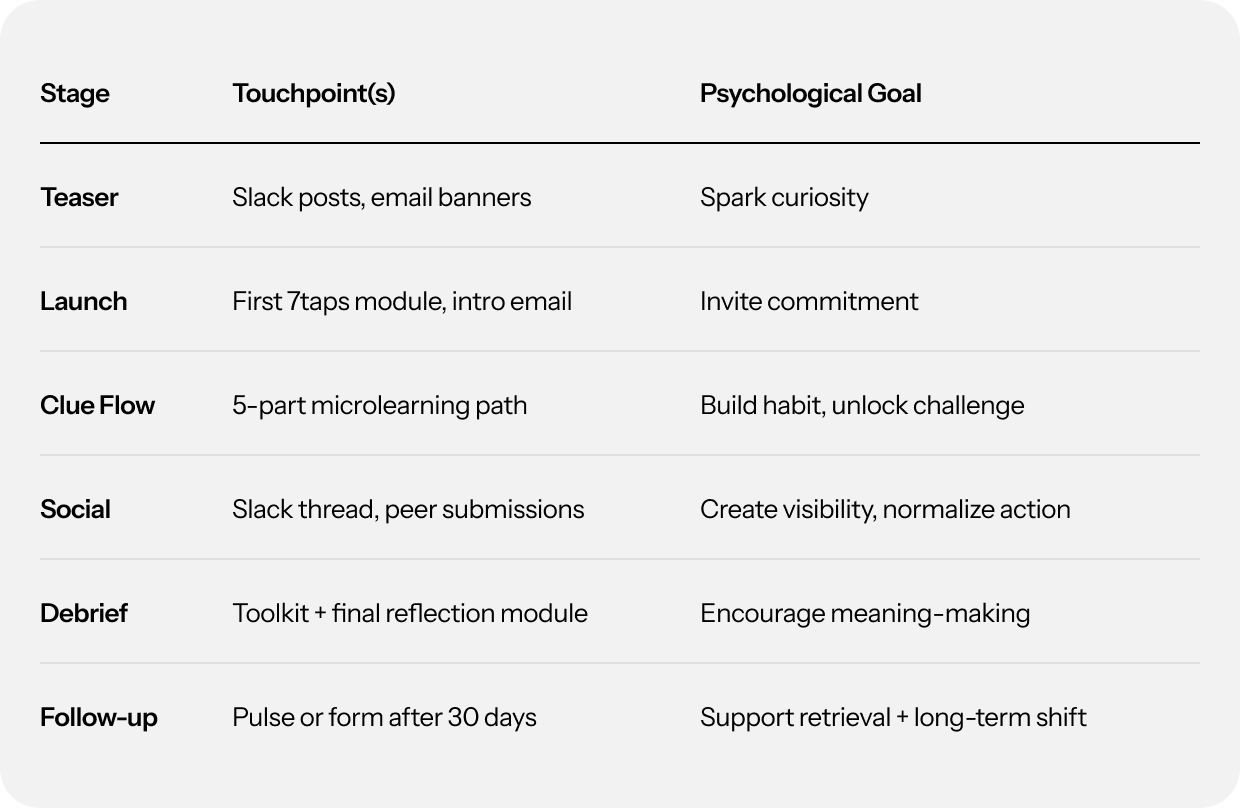
Think of it like a campaign, not a course. You’re managing momentum—not just completion.
Each “clue” = one 7taps microlearning module.
Each module = 3–5 cards designed for insight, engagement, and action.
Here’s a breakdown of the five-module structure with rationale and card ideas:
Clue 1: The Silent 1:1
Goal: Shift from status updates to real conversations.
Insight: Many new managers don’t know how to structure their 1:1s.
Cards:
Clue 2: Delegation Gone Wrong
Goal: Replace vague asks with clarity and context
Cards:
Clue 3: Feedback Fallout
Goal: Build the habit of timely, specific feedback
Cards:
Clue 4: Slack Spiral
Goal: Help managers de-escalate tone and tension in written comms
Cards:
Clue 5: Prioritization Puzzle
Goal: Move from reacting to leading with purpose
Cards:
You don’t need points, badges, or leaderboards to drive momentum. What you need is visibility, relevance, and human connection.
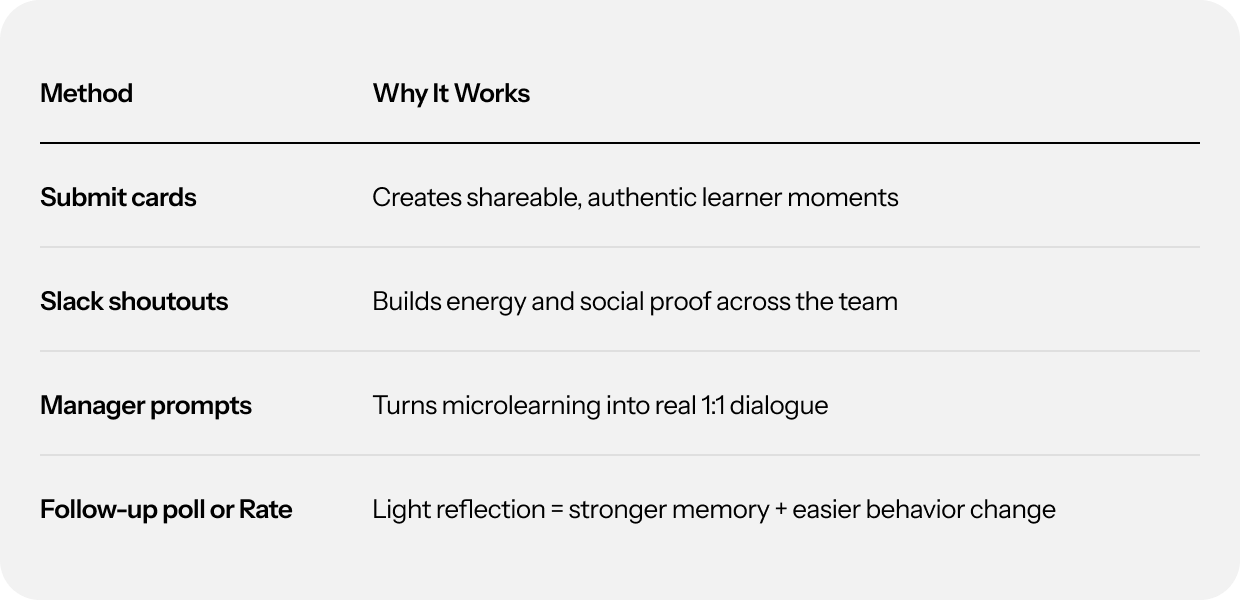
People often assume gamification = engagement. But badges and leaderboards mostly reward speed. Real growth happens when learners pause, reflect, and apply.
You don’t need 20 KPIs. You need the right signals that show real change is happening:
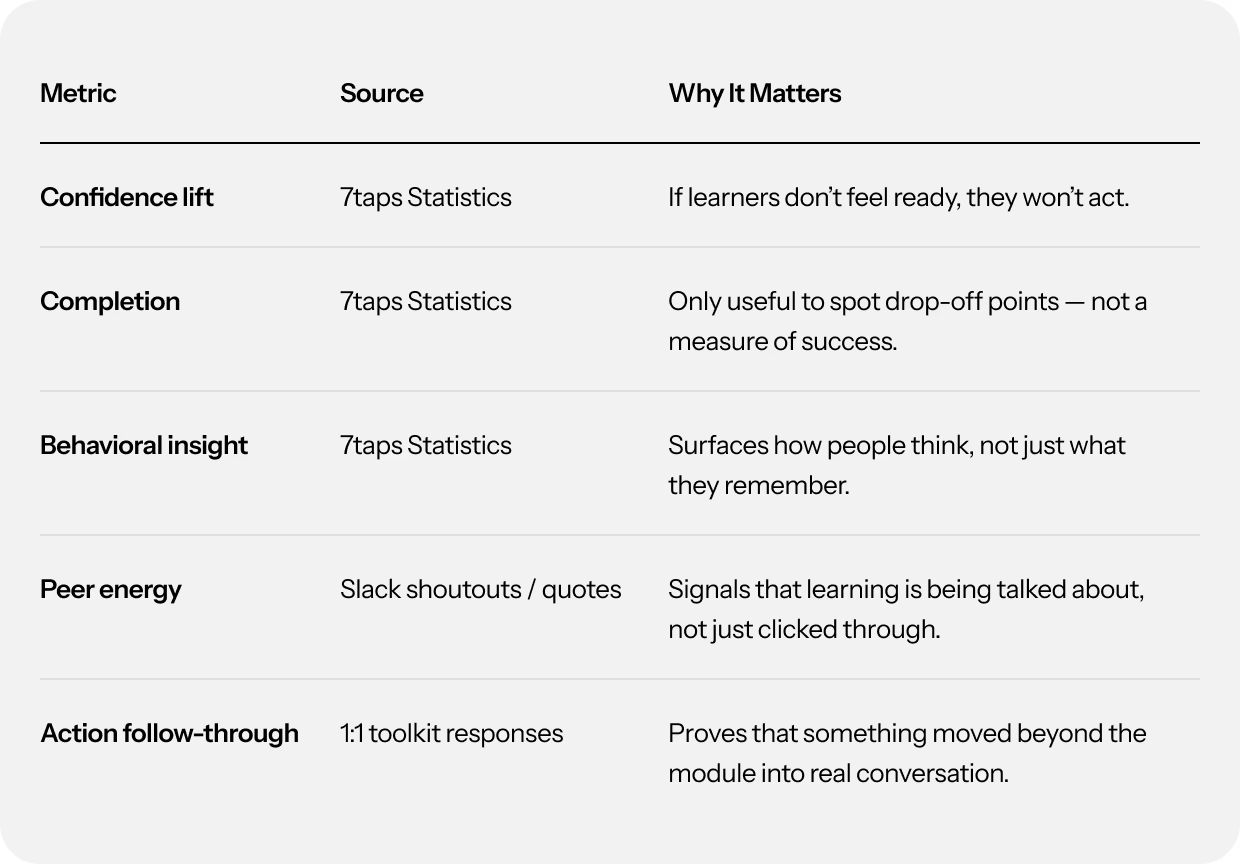
A great scavenger hunt doesn’t just test retention — it triggers reflection, action, and visibility. Those are the moments worth tracking.
You’re not just delivering content. You’re creating a story learners want to follow.
How to build curiosity & open the narrative:
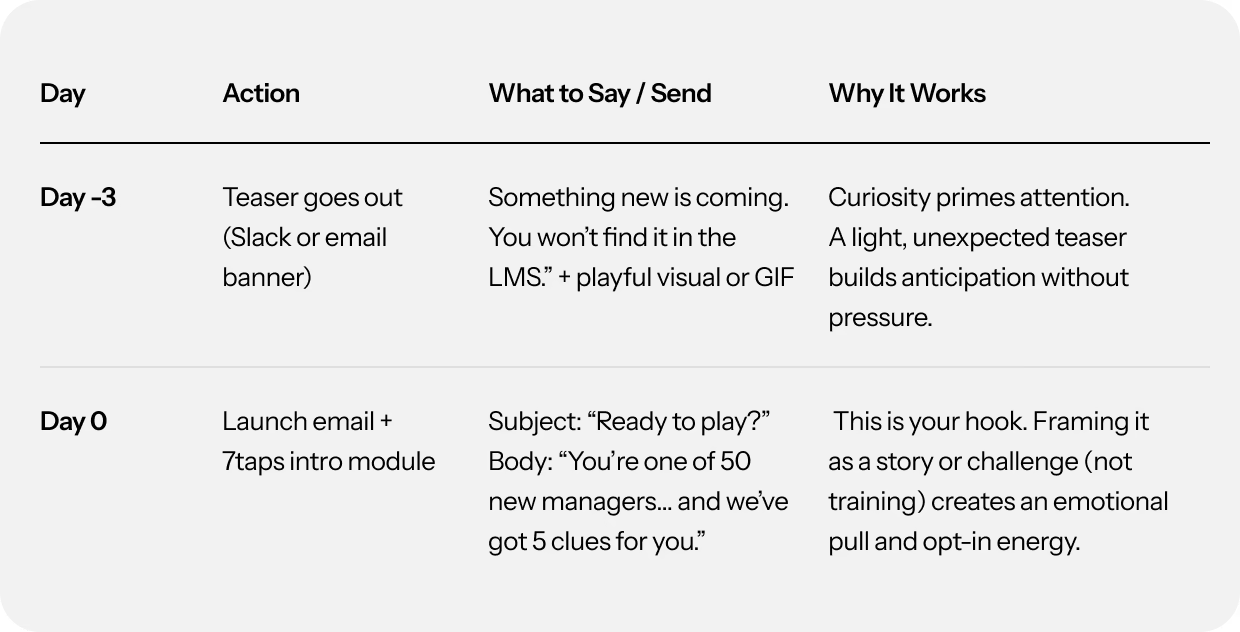
🧠 Strategic note: Most learning fails because people tune out before they ever tune in. This phase is about earning attention—not just sending information.
Then, spread the delivery across days to increase message retention and give space for application. One short module per day feels light—but it adds up to behavior change when embedded in workflow:
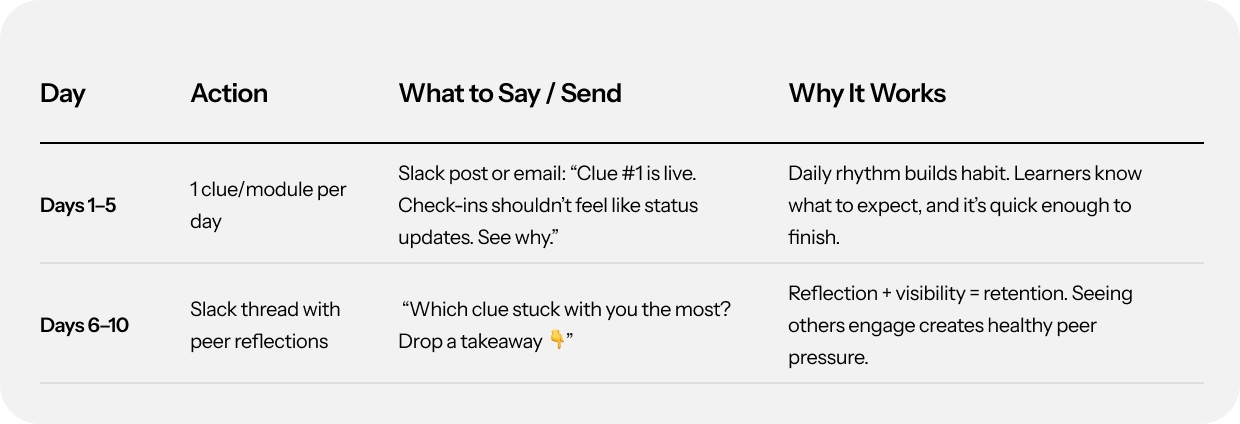
Behavior change doesn’t end at completion. It extends into practice, reinforcement, and reflection. This final phase ensures what was learned sticks—and gets embedded into conversations and workflows:
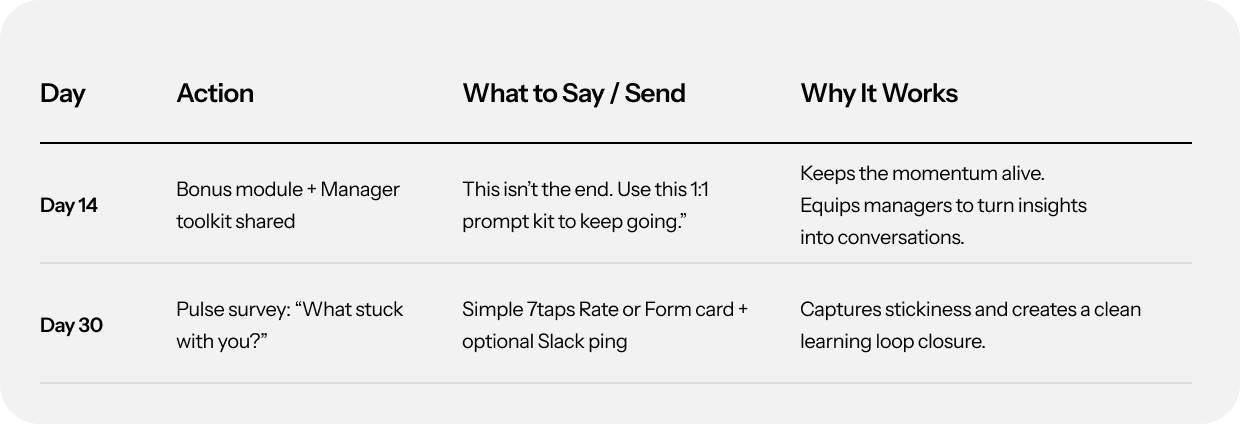
Yes, it’s a scavenger hunt. But what you’re really doing is leading with context, inviting reflection, and embedding learning in real work.
The clues are just the wrappers.The real power is in the system of nudges, shares, and small social proof moments that follow.
Design this well and people won’t say “I completed training.”
They’ll say: “This changed how I manage.”
You’ve seen the blueprint. You’ve seen the flow.
You don’t need weeks of planning or an LMS overhaul to get started.
You just need one spark. One clue. One moment that sticks.
Ready to build your own Scavenger Hunt? 😎
See you in 7taps. Start creating here.